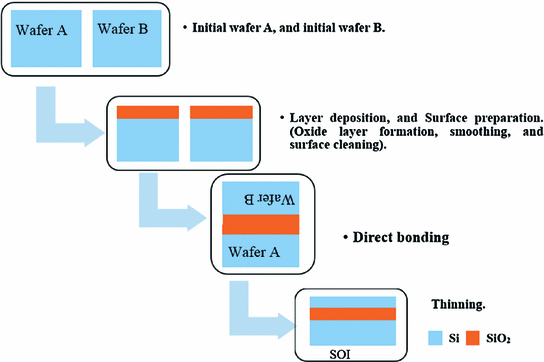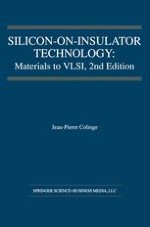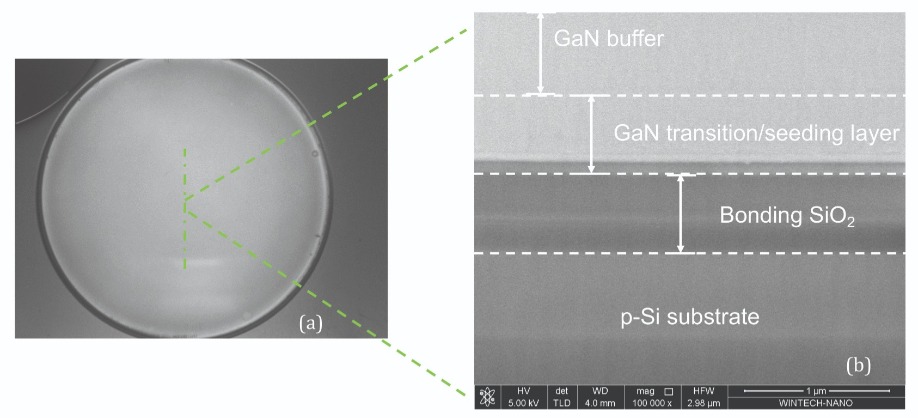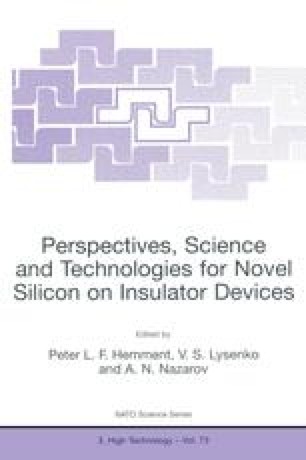Wafer Bonding For Silicon On Insulator Technologies
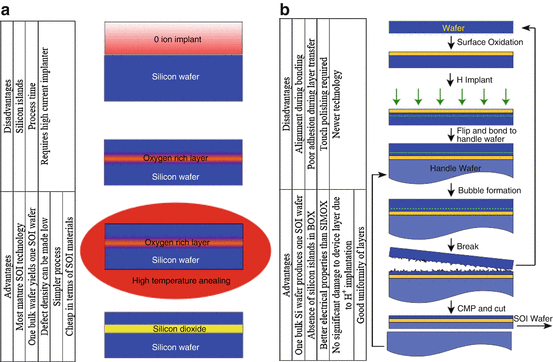
Soi wafers for mems are nearly always fabricated by wafer bonding.
Wafer bonding for silicon on insulator technologies. 30 a thin sacrificial layer for example a sige layer is grown epitaxially on the initial donor wafer. Simox separation by implantation of oxygen uses an oxygen ion beam implantation process followed by high temperature annealing to create a buried sio 2 layer. Therefore process techniques are divided in accordance with the chemical structure of the surface in hydrophilic compare to scheme of a hydrophilic silicon surface or hydrophobic compare to scheme of a hydrophobic silicon surface. Defects can be precisely mapped as part of the.
Specific techniques have been developed to achieve very thin layers through bonding and thinning processes. The cavity is formed by wet etching the thermally grown sio 2 layer on top of the silicon substrate. In soi wafers the insulator is almost invariably a thermal silicon oxide sio 2 layer and the substrate is a silicon wafer. First developed in order to obtain soi wafers with very thin top silicon layers these techniques are referred to as bond and etch back silicon on insulator processes besoi.
It is proposed the wafers are drawn into intimate contact as a result of the gaseous oxygen between them being consumed by oxidation thus producing a partial vacuum. Wafer bonding the insulating layer is formed by directly bonding oxidized silicon with a second substrate. It is proposed the wafers are drawn into intimate contact as a result of the gaseous oxygen between them being consumed by oxidation thus producing a partial vacuum. For all practical purposes the soi film thickness varies in mems applications from 4 to 200 μm.
7 3 shows a sampling of silicon film and buried oxide thicknesses based on a large number of soi wafer specifications for mems applications. The surface state of a silicon wafer can be measured by the contact angle a drop of water forms. Sonix wafer inspection systems provide nondestructive testing ndt to detect gaps and voids of less than 0 1 micron enabling superior diagnostic imaging for wafer bonding and device level bond rings in silicon on insulator anodic metal to metal and other high end bonded wafer applications. Silicon on insulator soi wafers are manufactured by bonding one si wafer to the other by activating the surface of both wafers and then placing them together so that a strong bond occurs first through the van der waals attraction and then by forming a covalent bond 59 activation of the superclean si surface is the key to accomplish this bonding typically by a remote plasma process.
The majority of the second substrate is subsequently. Silicon on insulator soi is a semiconductor structure consisting of a layer of single crystalline silicon separated from the bulk substrate by a thin layer of insulator. Sio 2 based soi wafers can be produced by several methods. Direct bonding is mostly referred to as bonding with silicon.
A silicon wafer bonding process is described in which only thermally grown oxide is present between wafer pairs. Bonding occurs after insertion into an oxidizing ambient. The proposed bonding mechanism is polymerization of. Bonding occurs after insertion into an oxidizing ambient.
A silicon wafer bonding process is described in which only thermally grown oxide is present between wafer pairs. Depending on the type of application the.













